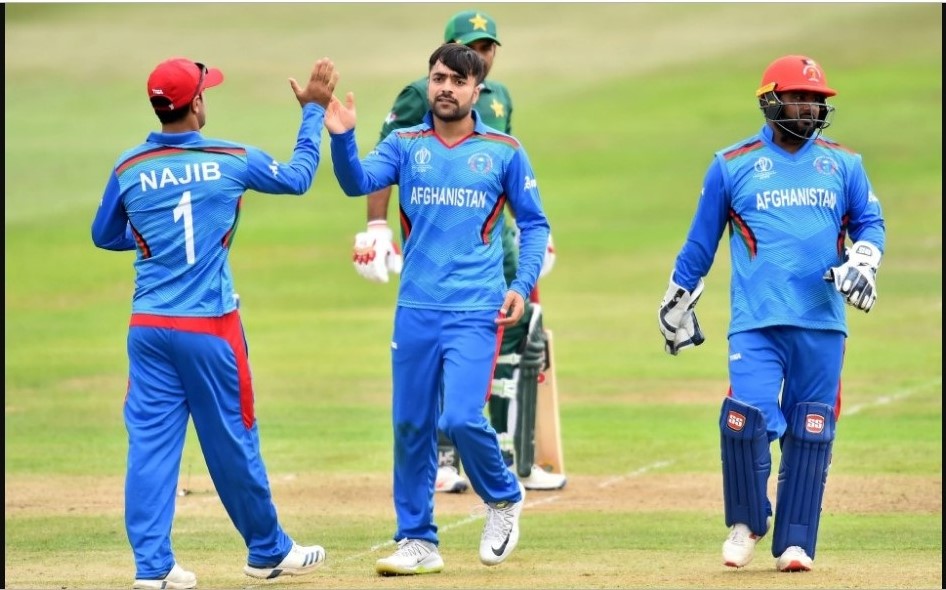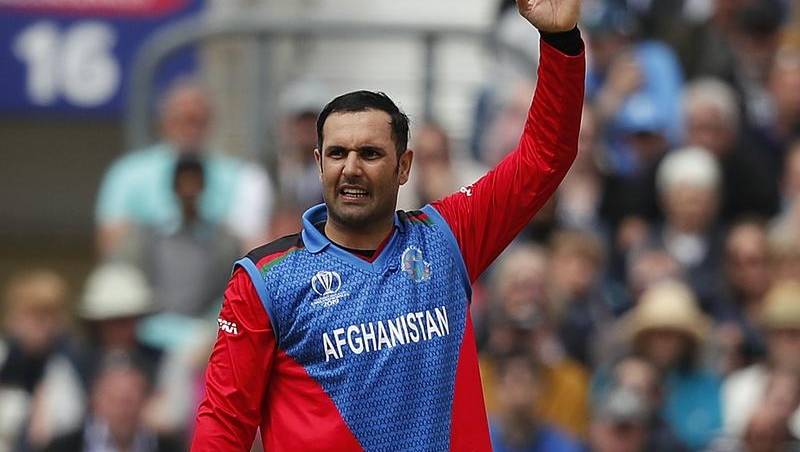Blast walls are erected to protect people and buildings from the after-effects of explosions. One such wall in Kabul is emblazoned with a caption: ‘Faces of new Afghanistan’. It is a mural of leading Afghans trying to shape a new image for the country - women’s and children’s rights advocates, award-winning journalists and photographers, and female members of an Afghan orchestra who have performed all over the world, defying the threats they receive at home.
Publish dateSunday 26 May 2019 - 02:05
Story Code : 185782
AVA- One face on this wall is of a cricketer about to bowl a ball. His name is Rashid Khan. Four years after his international debut, he is a superstar in the Indian Premier League, Big Bash and beyond, the No1 Twenty20 bowler in the world and the third best one-day international bowler to boot.
“It makes you feel very, very special to be in that place and have your photo imprinted with people who have lots of achievements for Afghanistan,” Rashid says. “It’s really special to be among them. I feel really blessed - you can’t believe to get that sort of achievement in a very short period of time. To be playing four years and getting that sort of success and to a stage like that - it's more than a dream.”
When Rashid was born, Afghanistan had no cricket team or grounds. They weren’t even members of the International Cricket Council, even though the Taliban grew to tolerate cricket. Now, Afghanistan are among the top 10 nations in the world, and preparing for their second Cricket World Cup. Their hopes are sustained by Rashid.
Afghanistan’s greatest ever sportsman learned the sport in Pakistan. Shortly after the US attacks on Afghanistan, which began in October 2001, Rashid, believed to be three at the time, fled with his family to Peshawar. There, Rashid and his six brothers learned cricket. The seven, who all bowled leg-spin, played with a tape ball - a tennis ball covered in tape - in the street or simply in the corridor by their house.
“I was playing a lot at home - three, four hours, playing with the brothers every day. That improved my game and my skills.”
The family were part of the Afghan middle-class - his father worked in a car business, and his parents dreamed of him becoming a doctor. Rashid preferred to study cricket instead, scouring footage of leg-spin in action. “I watched Shahid Afridi, Anil Kumble - these two were my favourites.” The difficulty of obtaining spin with a tape ball encouraged Rashid, like Afridi and Kumble, to bowl unusually quick - generally over 60mph - and straight. “The more you bowl wicket-to-wicket, the more it makes it difficult for the batsman. If he makes a little mistake he's gone.”
Rashid recalls being 14 when he first played cricket with a hard ball, in a game in Peshawar, when his friend asked him to fill in. Then mainly a batsman, Rashid scored 65 in his first game. “I loved the game and I loved the hard ball.”
Soon after, Rashid and his family returned home for good. He found that “we hardly had some good facilities, or some good grounds in Afghanistan.”
Rashid was inspired by watching Afghanistan on TV in their first global event, the T20 World Cup in 2010. “When I saw the international side playing in the international level, then the motivation and everything started. I just tried my best to represent my country.
“When we came back home I played a lot - it was a little bit serious. And I thought: 'Yeah I'm good enough, I just need to give a bit of time to it and improve my skills.'” Rashid was advised that his leg-spin, rather than batting, was more likely to elevate his career. He constantly experimented with new grips.
Even as word developed of his talents, Rashid remained essentially an entirely self-taught cricketer. Three months in Afghanistan’s academy were the limit of his formal coaching before playing international cricket. "I think if I would have changed my action I would have lost my consistency, I would have lost my speed and my rhythm and everything. So I think whatever I have is something natural."
When bowling with a hard ball, Rashid uses the “same grips” he had honed with a tape ball. Unlike most leg-spinners, Rashid uses his fingers, more than his wrist, so batsmen cannot scour his wrist for clues about when he is bowling a googly, which he does unusually often. "The release point is the same for both wrong one and leg-spin."
Thriving immediately after making his ODI debut, in Zimbabwe, Rashid developed an astounding international record that could only partly be explained away by Afghanistan seldom being afforded matches against the old order of long-established international teams. And so, at the Carlton-Ritz hotel in Bangalore in 2017, some of India’s richest people fought over Rashid. By the day’s end, he had gone for £450,000 in the IPL auction, joining Sunrisers Hyderabad.
When the IPL season began, Rashid became the first Afghan to play in it. “I always watched IPL on TV, but when you’re coming from a country like Afghanistan, playing in the IPL is more than special,” he says. “It was a special feeling, a proud feeling, for me and my country as well to represent Afghanistan in the IPL.” Rashid got a wicket with his fourth ball on his Sunrisers debut, one of 17 in a brilliant debut season. His path to being an elite T20 player, one of the most sought-after cricketers in every league in the world - especially as his buccaneering batting is developing - was set.
Absurdly for a cricketer who is only 21, Rashid already has a discernible legacy: encouraging T20 franchises the world over to invest in Afghan talent, especially spinners, and Afghan children to embrace the art.
Rashid’s schedule takes him all over the world and is so relentless that he was able to return home only once last year. But in his occasional forays back to Afghanistan, he has observed how academies and the streets now brim with children bowling leg-spin, inspired by him as Rashid once was by Afridi. “I really love to watch.”
Just as promised on that mural, Rashid believes that cricketing success is giving a new image to Afghanistan. “Sport is the only thing that brings peace to the country” he says. “So it's a wonderful feeling to see the youngsters playing cricket.”
“It makes you feel very, very special to be in that place and have your photo imprinted with people who have lots of achievements for Afghanistan,” Rashid says. “It’s really special to be among them. I feel really blessed - you can’t believe to get that sort of achievement in a very short period of time. To be playing four years and getting that sort of success and to a stage like that - it's more than a dream.”
When Rashid was born, Afghanistan had no cricket team or grounds. They weren’t even members of the International Cricket Council, even though the Taliban grew to tolerate cricket. Now, Afghanistan are among the top 10 nations in the world, and preparing for their second Cricket World Cup. Their hopes are sustained by Rashid.
Afghanistan’s greatest ever sportsman learned the sport in Pakistan. Shortly after the US attacks on Afghanistan, which began in October 2001, Rashid, believed to be three at the time, fled with his family to Peshawar. There, Rashid and his six brothers learned cricket. The seven, who all bowled leg-spin, played with a tape ball - a tennis ball covered in tape - in the street or simply in the corridor by their house.
“I was playing a lot at home - three, four hours, playing with the brothers every day. That improved my game and my skills.”
The family were part of the Afghan middle-class - his father worked in a car business, and his parents dreamed of him becoming a doctor. Rashid preferred to study cricket instead, scouring footage of leg-spin in action. “I watched Shahid Afridi, Anil Kumble - these two were my favourites.” The difficulty of obtaining spin with a tape ball encouraged Rashid, like Afridi and Kumble, to bowl unusually quick - generally over 60mph - and straight. “The more you bowl wicket-to-wicket, the more it makes it difficult for the batsman. If he makes a little mistake he's gone.”
Rashid recalls being 14 when he first played cricket with a hard ball, in a game in Peshawar, when his friend asked him to fill in. Then mainly a batsman, Rashid scored 65 in his first game. “I loved the game and I loved the hard ball.”
Soon after, Rashid and his family returned home for good. He found that “we hardly had some good facilities, or some good grounds in Afghanistan.”
Rashid was inspired by watching Afghanistan on TV in their first global event, the T20 World Cup in 2010. “When I saw the international side playing in the international level, then the motivation and everything started. I just tried my best to represent my country.
“When we came back home I played a lot - it was a little bit serious. And I thought: 'Yeah I'm good enough, I just need to give a bit of time to it and improve my skills.'” Rashid was advised that his leg-spin, rather than batting, was more likely to elevate his career. He constantly experimented with new grips.
Even as word developed of his talents, Rashid remained essentially an entirely self-taught cricketer. Three months in Afghanistan’s academy were the limit of his formal coaching before playing international cricket. "I think if I would have changed my action I would have lost my consistency, I would have lost my speed and my rhythm and everything. So I think whatever I have is something natural."
When bowling with a hard ball, Rashid uses the “same grips” he had honed with a tape ball. Unlike most leg-spinners, Rashid uses his fingers, more than his wrist, so batsmen cannot scour his wrist for clues about when he is bowling a googly, which he does unusually often. "The release point is the same for both wrong one and leg-spin."
Thriving immediately after making his ODI debut, in Zimbabwe, Rashid developed an astounding international record that could only partly be explained away by Afghanistan seldom being afforded matches against the old order of long-established international teams. And so, at the Carlton-Ritz hotel in Bangalore in 2017, some of India’s richest people fought over Rashid. By the day’s end, he had gone for £450,000 in the IPL auction, joining Sunrisers Hyderabad.
When the IPL season began, Rashid became the first Afghan to play in it. “I always watched IPL on TV, but when you’re coming from a country like Afghanistan, playing in the IPL is more than special,” he says. “It was a special feeling, a proud feeling, for me and my country as well to represent Afghanistan in the IPL.” Rashid got a wicket with his fourth ball on his Sunrisers debut, one of 17 in a brilliant debut season. His path to being an elite T20 player, one of the most sought-after cricketers in every league in the world - especially as his buccaneering batting is developing - was set.
Absurdly for a cricketer who is only 21, Rashid already has a discernible legacy: encouraging T20 franchises the world over to invest in Afghan talent, especially spinners, and Afghan children to embrace the art.
Rashid’s schedule takes him all over the world and is so relentless that he was able to return home only once last year. But in his occasional forays back to Afghanistan, he has observed how academies and the streets now brim with children bowling leg-spin, inspired by him as Rashid once was by Afridi. “I really love to watch.”
Just as promised on that mural, Rashid believes that cricketing success is giving a new image to Afghanistan. “Sport is the only thing that brings peace to the country” he says. “So it's a wonderful feeling to see the youngsters playing cricket.”
avapress.com/vdcaamn6u49na01.tgk4.html
Tags
Top hits












